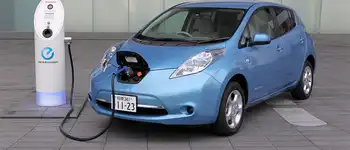Ohio consumer group seeks power outage review
By Associated Press
NFPA 70e Training
Our customized live online or in‑person group training can be delivered to your staff at your location.

- Live Online
- 6 hours Instructor-led
- Group Training Available
The newly formed partnership, Consumers for Reliable Electricity in Ohio, seeks a probe by the Public Utilities Commission of Ohio into the state's four investor-owned utilities: American Electric Power, Dayton Power & Light, Duke Energy and FirstEnergy. Money from the requested rate hikes would help offset costs of clean up and repairs associated with the hurricane-strength wind storm that hit Ohio earlier this year.
But Ohio Consumer's Counsel Janine Migden-Ostrander, who helped unite the groups for the complaint, says the utilities commission needs to know whether more routine maintenance could have avoided some of the power outages before authorizing higher rates.
Thousands of Ohioans lost power for a week or more in the storm's aftermath, she said, after many had gone seven days without power during a bad ice storm in 2004.
"Power being down for a week every couple of years should not be the new norm," she said. "We would like to see things return to what we were used to in the past, which was fairly reliable service."
She questioned whether power companies have made the best use of the rate revenue they have already received to ensure that customers get reliable service.
FirstEnergy spokesman Ralph DiNicola called the group's charges "absolute nonsense." He said the September 14 storm's reach was unexpected and it knocked out power to tens of millions of people across the country, including 1 million FirstEnergy customers.
Ninety percent of FirstEnergy customers were restored within four days of the storm, and all power was back on by September 22, he said.
"It's great to sit on the sidelines and second guess what everybody did, instead of being part of doing what you can to ensure that customers have service that's as reliable as it can be," he said.
He said many of the same groups oppose utility rate increases that fund state-of-the-art technology, truck maintenance and staff to handle such a crisis.
"It's the usual chaff they put up in the air to slow down the system, then they complain that the system's too slow," DiNicola said.
Migden-Ostrander represents residential utility users in dealings with the PUCO. Other members of the coalition include AARP Ohio, the Appalachian People's Action Coalition, and the Ohio Farm Bureau Federation.
"The need for electric power for many farm and rural energy consumers is increasing dramatically," said Dale Arnold, the federation's director of energy services. "Farm Bureau leaders feel that enhancing and upgrading electric service will probably be one of the industry's largest challenges since the system was first created in the 1920s and '30s."
Ellis Jacobs, an attorney representing the Edgemont Neighborhood Coalition of Dayton, said customers have already paid for maintenance and storm repairs in their bills for years.
"We want to make sure that they have been getting their money's worth," he said in a statement.
DiNicola said he believes the requested investigation would prove FirstEnergy's utilities are doing all they can to keep service reliable. But the commission might decide it's a waste of time and resources when the commission is preparing for the January 1 launch of Ohio's newly reformed electric market rules, he said.
PUCO spokeswoman Shana Eiselstein said the commission plans to review the lengthy filing before deciding how to proceed.











